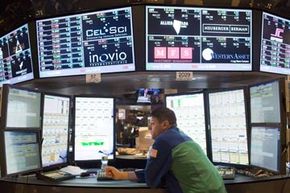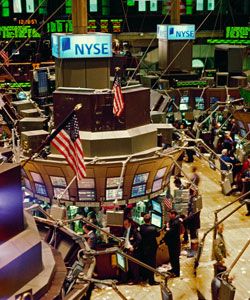The goal of stock market investing is deceptively simple: buy low and sell high. It's deceptive because no one — not even Warren Buffett — knows precisely when an individual stock price has hit its low point, making it the absolute best time to buy. Likewise, no one knows the exact moment when a stock price has peaked, making it the ideal time to sell.
Anybody can be a stock market genius in hindsight. From the comfort of 2013, it's easy to look back at a date like March 9, 2009, and pinpoint it as the exact moment when the Dow Jones industrial average hit the lowest point of the recession; a miserable 6,547.05, a full 54 percent lower than its previous high of 14,164.53 on Oct. 9, 2007 [source: Stark]. "This," we can say with confidence, "was the bottom of the bottom."
Advertisement
But what were investors and market analysts saying back on March 9, 2009? Thomas Nyheim, a portfolio manager at Christiana Bank & Trust Company, told CNN Money that he didn't expect stocks to rally until later that year, describing investors as being "in defensive mode. They've seen too many losses and are sitting on the sidelines" [source: Twin].
Nice try, Thomas. Less than month later, the Dow had rallied over 8,000. By July, it had topped 9,000. And by the end of 2009, the Dow was back over 10,000, a number that some doomsday analysts swore we would never witness again [source: Google Finance].
On Feb. 1, 2013, the Dow broke the 14,000 mark for the first time in more than five years [source: Cox]. If you had the uncanny foresight to buy large amounts of stock on March 9, 2009, you would be a very happy — or at least wealthy — individual. But like most people, even the "experts," you had no idea when the market was about to rebound.
Spotting a market rebound is hard enough, but today's question is downright confounding. How can you tell if an individual stock is about to rebound? The good news is that nearly the entire field of stock market analysis is devoted to this very question. The bad news ... even the smartest portfolio managers in the world still get it wrong.
Advertisement


